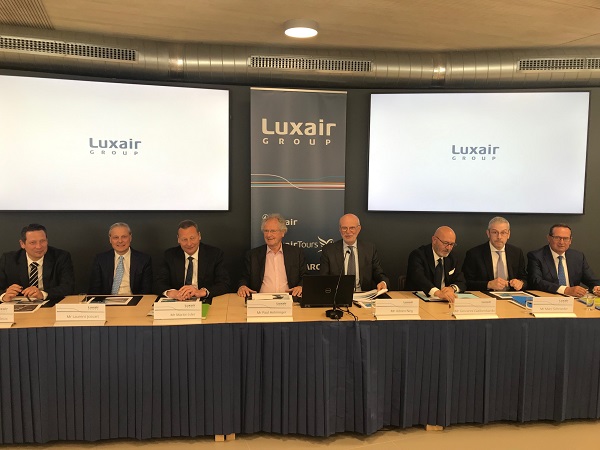 Luxair Group annual press conference 2019 re 2018 results;
Luxair Group annual press conference 2019 re 2018 results;
Luxair was created in 1961 and currently operates over four business units: Luxair airline; LuxairTours tour operator, Luxair Services and LuxairCargo.
The outlook for Luxair airline is for passenger growth stagnating, with a stable load factor. For LuxairTours, bookings to date are up 2.5% compared to this time in 2018. For Luxair Services, 4.3 million passengers are expected in 2019, an increase of 6.5% over 2018. For LuxairCargo, the future is challenging due to an unpredictable world economy.
In 2018, Luxair airlines transported a new record of around 2.2 million passengers, up considerably from around 1.7m in 2014. The 2017-2018 increase in passengers was 11%, representing a 12% increase in seat capacity and a 14% increase in flights. The average load factor is 64%.
Passenger numbers grew 14% between 2015 and 2018 (9% from 2017 - 2018), with the tour operator having a 76.8% load factor in 2018 (75% average since 2015). The tour operator flew 5,369 flights in 2018, up 6% from 2017.
LuxairCargo
Luxair Services
The Luxair Group is one of the Top 10 employers in the Grand Duchy with almost 3,000 direct employees and supporting 3,000 indirect jobs also.
Adrien Ney, CEO of Luxair Group, explained that Luxair Airline has experienced increasing competition on many routes over the past few years, giving London, Munich and Oporto as just three examples: in 2011, BA and VLM competed with Luxair serving London (SA to Heathrow; the others to LondonCity); in 2018, Ryanair (Stanstead) and Easyjet (Gatwick) have joined BA (Heathrow) and Luxair (LondonCity) in servicing the UK's capital city. Ryanair have also come in to compete on certain routes (Dublin, Barcelona, Lisbon, Madrid, Milan, Porto), etc.
Employee costs rose 4% by automatic salary indexation in 2018.
Nevertheless, Luxair is on track for growth. Its fleet currently comprises 11 Bombardier Q400 turbo-props (76 seats), 4 Boeing 737-700s (141 seats) and 4 Boeing 737-800s (186 seats). Another 2 Boeing 737-700s will join the fleet in 2019.








